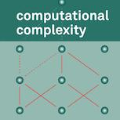Random jammers that overpower transmitted signals are a practical concern for many wireless communication protocols. As such, wireless receivers must be able to cope with standard channel noise and jamming (intentional or unintentional). To address this challenge, we propose a novel method to augment the resilience of the recent family of universal error-correcting GRAND algorithms. This method, called Erasure Decoding by Gaussian Elimination (EDGE), impacts the syndrome check block and is applicable to any variant of GRAND. We show that the proposed EDGE method naturally reverts to the original syndrome check function in the absence of erasures caused by jamming. We demonstrate this by implementing and evaluating GRAND-EDGE and ORBGRAND-EDGE. Simulation results, using a Random Linear Code (RLC) with a code rate of $105/128$, show that the EDGE variants lower both the Block Error Rate (BLER) and the computational complexity by up to five order of magnitude compared to the original GRAND and ORBGRAND algorithms. We further compare ORBGRAND-EDGE to Ordered Statistics Decoding (OSD), and demonstrate an improvement of up to three orders of magnitude in the BLER.
翻译:无线接收器必须能够应对标准频道噪音和干扰(有意或无意的)等标准频道噪音和干扰。为了应对这一挑战,我们提出一种新的方法来增强最近全球错误纠正GRAND算法大家庭的恢复力。这个方法叫做高山消除法(EGE),它影响综合症检查块,并适用于GRAND的任何变体。我们表明,拟议的EDGE方法在没有干扰引起的消化装置的情况下,自然会恢复原综合症检查功能。我们通过实施和评估GRAND-EGE和ORBGRAND-EDGE,来证明这一点。使用105/128美元的随机线性代码(RLC)模拟结果,显示EDGE变异位数降低了控制区错误率和计算复杂性,比原GRAND和ORBGRAND算法高出5级。我们进一步将ORBGRAND-EGE值比拟GEGE的3级,显示SD的升级,并显示BOLOS的升级。



